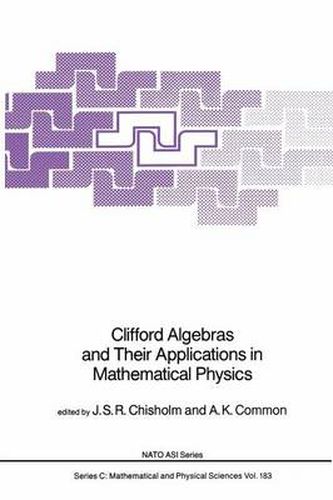Readings Newsletter
Become a Readings Member to make your shopping experience even easier.
Sign in or sign up for free!
You’re not far away from qualifying for FREE standard shipping within Australia
You’ve qualified for FREE standard shipping within Australia
The cart is loading…






This title is printed to order. This book may have been self-published. If so, we cannot guarantee the quality of the content. In the main most books will have gone through the editing process however some may not. We therefore suggest that you be aware of this before ordering this book. If in doubt check either the author or publisher’s details as we are unable to accept any returns unless they are faulty. Please contact us if you have any questions.
William Kingdon Clifford published the paper defining his geometric algebras in 1878, the year before his death. Clifford algebra is a generalisation to n-dimensional space of quaternions, which Hamilton used to represent scalars and vectors in real three-space: it is also a development of Grassmann’s algebra, incorporating in the fundamental relations inner products defined in terms of the metric of the space. It is a strange fact that the Gibbs Heaviside vector techniques came to dominate in scientific and technical literature, while quaternions and Clifford algebras, the true associative algebras of inner-product spaces, were regarded for nearly a century simply as interesting mathematical curiosities. During this period, Pauli, Dirac and Majorana used the algebras which bear their names to describe properties of elementary particles, their spin in particular. It seems likely that none of these eminent mathematical physicists realised that they were using Clifford algebras. A few research workers such as Fueter realised the power of this algebraic scheme, but the subject only began to be appreciated more widely after the publication of Chevalley’s book, ‘The Algebraic Theory of Spinors’ in 1954, and of Marcel Riesz’ Maryland Lectures in 1959. Some of the contributors to this volume, Georges Deschamps, Erik Folke Bolinder, Albert Crumeyrolle and David Hestenes were working in this field around that time, and in their turn have persuaded others of the importance of the subject.
$9.00 standard shipping within Australia
FREE standard shipping within Australia for orders over $100.00
Express & International shipping calculated at checkout
This title is printed to order. This book may have been self-published. If so, we cannot guarantee the quality of the content. In the main most books will have gone through the editing process however some may not. We therefore suggest that you be aware of this before ordering this book. If in doubt check either the author or publisher’s details as we are unable to accept any returns unless they are faulty. Please contact us if you have any questions.
William Kingdon Clifford published the paper defining his geometric algebras in 1878, the year before his death. Clifford algebra is a generalisation to n-dimensional space of quaternions, which Hamilton used to represent scalars and vectors in real three-space: it is also a development of Grassmann’s algebra, incorporating in the fundamental relations inner products defined in terms of the metric of the space. It is a strange fact that the Gibbs Heaviside vector techniques came to dominate in scientific and technical literature, while quaternions and Clifford algebras, the true associative algebras of inner-product spaces, were regarded for nearly a century simply as interesting mathematical curiosities. During this period, Pauli, Dirac and Majorana used the algebras which bear their names to describe properties of elementary particles, their spin in particular. It seems likely that none of these eminent mathematical physicists realised that they were using Clifford algebras. A few research workers such as Fueter realised the power of this algebraic scheme, but the subject only began to be appreciated more widely after the publication of Chevalley’s book, ‘The Algebraic Theory of Spinors’ in 1954, and of Marcel Riesz’ Maryland Lectures in 1959. Some of the contributors to this volume, Georges Deschamps, Erik Folke Bolinder, Albert Crumeyrolle and David Hestenes were working in this field around that time, and in their turn have persuaded others of the importance of the subject.